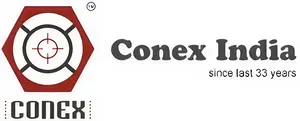C52100 Phosphor Bronze 8% C
C52100 Phosphor Bronze 8% C
At conexmetals.com, we offer C52100 Phosphor Bronze (8% C) – a premium copper-tin-phosphorus alloy with exceptional mechanical and corrosion-resistant properties. This alloy is known for its high strength, wear resistance, excellent fatigue performance, and machinability, making it ideal for precision engineering, electrical, and industrial applications.
C52100 is particularly favored where long-term reliability under dynamic loading and corrosion resistance in harsh environments are critical. It is widely used in bearings, bushings, gears, electrical contacts, springs, and valves.
Key Features of C52100 Phosphor Bronze 8% C
High Fatigue Strength: Excellent for components subjected to cyclic loads, such as springs and rotating parts.
Superior Wear Resistance: Reduces maintenance costs in bearings, bushings, and gears.
Excellent Corrosion Resistance: Performs well in humid, marine, and industrial environments.
Machinability: Optimized lead content allows precise machining for complex parts.
Dimensional Stability: Maintains shape and properties even under thermal stress.
Chemical Composition
| Element | Min (%) | Max (%) |
|---|---|---|
| Copper (Cu + Named Elements) | 91.0 | Rem |
| Tin (Sn) | 7.0 | 9.0 |
| Phosphorus (P) | 0.03 | 0.35 |
| Lead (Pb) | – | 0.3 |
| Zinc (Zn) | – | 1.0 |
| Iron (Fe) | – | 0.15 |
Notes:
Phosphorus increases hardness, wear resistance, and fatigue strength.
Tin enhances corrosion resistance and mechanical strength.
Lead improves machinability for precision components.
Mechanical Properties (Typical at Room Temperature)
| Form | Temper | Code | Tensile Strength (ksi) | Yield Strength (ksi) | Elongation (%) | Hardness |
|---|---|---|---|---|---|---|
| Rod / Wire | Half Hard | H02 | 60 | 40 | 25 | 70 HB |
| Rod / Wire | Hard | H04 | 75 | 55 | 18 | 85 HB |
| Flat Products | Spring | H08 | 100 | 80 | 4 | 95 HB |
Insights:
High tensile strength ensures reliability in high-stress applications.
Moderate elongation provides flexibility and prevents brittle failure.
Ideal for parts requiring high fatigue resistance under repeated loads.
Physical Properties
| Property | Value |
|---|---|
| Melting Point | 1750–1820°F |
| Density | 0.33 lb/cu in |
| Specific Gravity | 8.9 |
| Electrical Conductivity | 15–18% IACS |
| Thermal Conductivity | 50–55 Btu/sq ft/ft/hr/°F |
| Thermal Expansion | 9.5 × 10⁻⁶ /°F (68–572°F) |
| Modulus of Elasticity | 15,000 ksi |
| Modulus of Rigidity | 5,500 ksi |
Fabrication & Machining
| Process | Suitability |
|---|---|
| Soldering | Excellent |
| Brazing | Good |
| Cold Working | Very Good |
| Machinability | 80–85% Rating |
| Welding | Not Recommended (prefer brazing) |
Practical Tips:
Use standard bronze machining techniques; avoid excessive tool heat.
Anneal after heavy cold working to restore ductility.
Suitable for springs, gears, bushings, and high-precision parts.
Thermal Treatment
| Process | Min Temp (°F) | Max Temp (°F) |
|---|---|---|
| Annealing | 850 | 1200 |
Benefits:
Improves ductility and workability.
Reduces internal stresses from cold working.
Typical Applications
Bearings & Bushings – Wear-resistant and corrosion-proof for industrial machinery.
Springs & Gears – High fatigue strength ensures reliable performance.
Electrical Connectors & Contacts – Excellent conductivity with corrosion resistance.
Valve Components & Shafts – Long-lasting performance in harsh environments.
Marine & Industrial Equipment – Withstands humidity and corrosive conditions.
Advantages for Engineers & Manufacturers:
Reduces maintenance costs due to wear resistance.
Machinable for precision components.
Stable performance under cyclic and thermal loads.
Applicable Standards
ASTM B139/B139M – Phosphor Bronze Rods, Bars & Shapes
ASTM B103/B103M – Phosphor Bronze Plate, Sheet & Strip
SAE J461 / J463 – Wrought & Cast Copper Alloys
AMS 4520 – Cold Rolled Bronze Strip (Half Hard)
MIL-B-13501 – Bearings & Bushings, Brass & Bronze Machined or Formed



